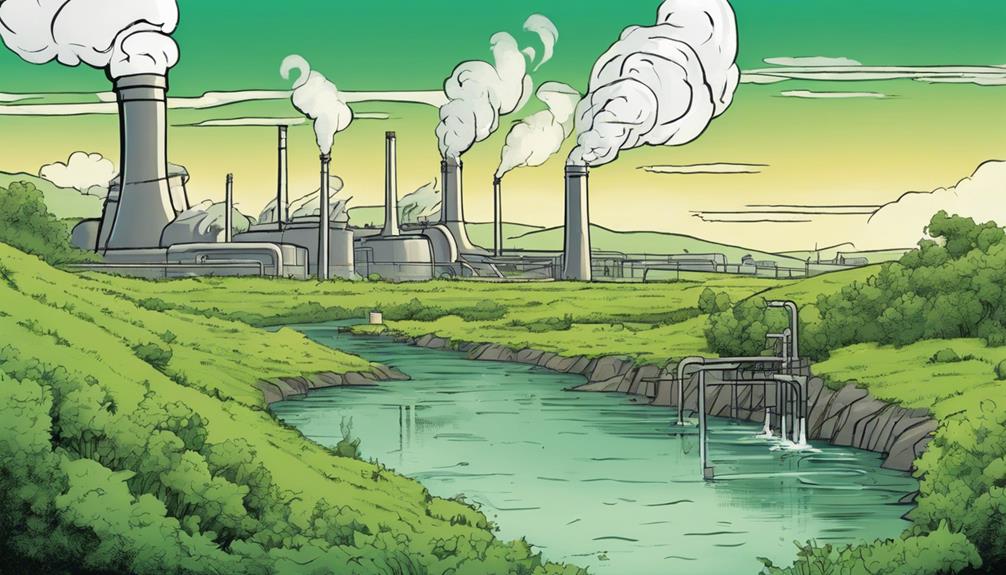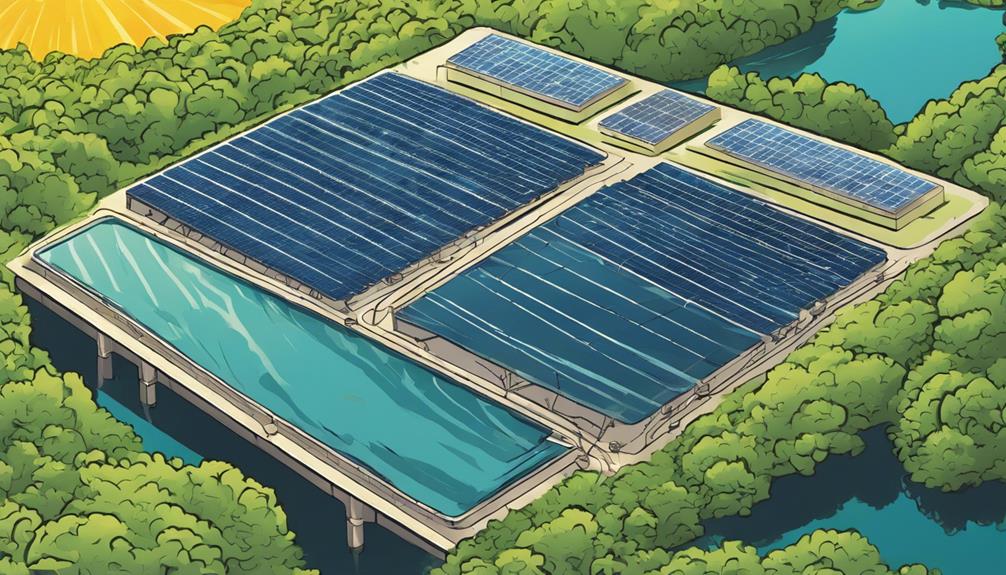As we harness the power of geothermal energy, we must prioritize eco-conscious practices to reduce its environmental impact and secure a sustainable future. We're taking steps to conduct thorough environmental assessments, quantify and minimize greenhouse gas emissions, and employ advanced treatment processes. We're also implementing effective fluid management techniques, reducing air pollution emissions, and safeguarding water sources quality. By adopting sustainable waste management practices and shifting to low-temperature systems, we're committed to making geothermal energy a cleaner, greener option. Want to know more about our strategies for a more eco-conscious geothermal energy industry?
Key Takeaways
- Conduct thorough environmental assessments to identify and mitigate potential eco-friendly risks in geothermal energy projects.
- Implement advanced fluid management techniques, such as evaporation and ion exchange, to minimize environmental impacts of geothermal brine.
- Adopt emission control technologies and shift to low-temperature binary cycle power plants to reduce air pollution emissions.
- Enforce stringent regulations and regularly monitor water quality to prevent contamination and safeguard water sources.
- Implement sustainable waste management practices, including proper disposal and treatment of drilling fluids and geothermal brines.
Environmental Impact Mitigation Strategies
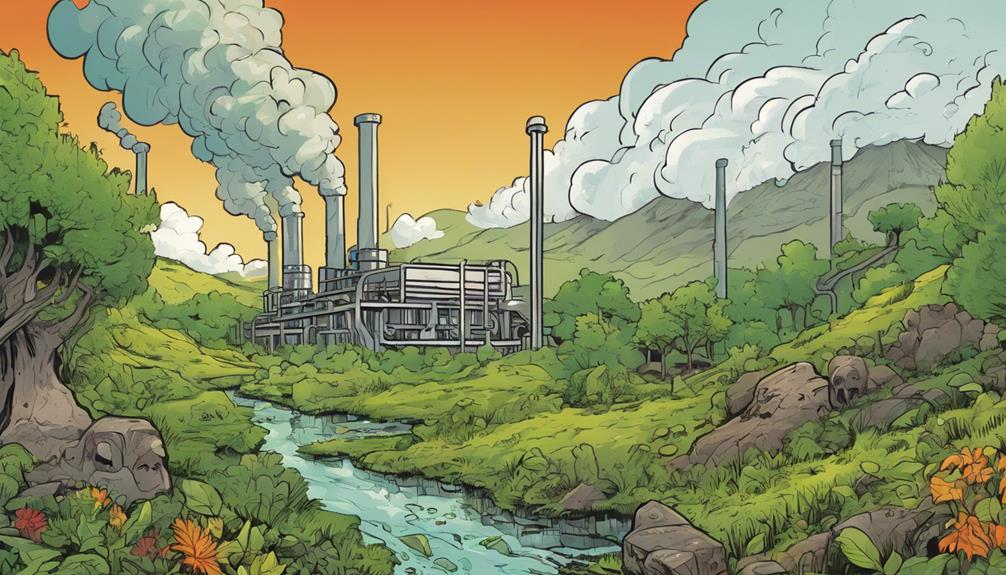
As we venture into geothermal energy production, it's crucial that we adopt proactive environmental impact mitigation strategies to minimize harm to ecosystems and species, securing a sustainable future for generations to come.
We must conduct thorough environmental assessments before implementing projects to identify potential risks and take preventive measures. This includes quantifying and minimizing greenhouse gas emissions from drilling and operations, as well as employing advanced treatment processes for geothermal brine and closed-loop systems.
Effective Fluid Management Techniques
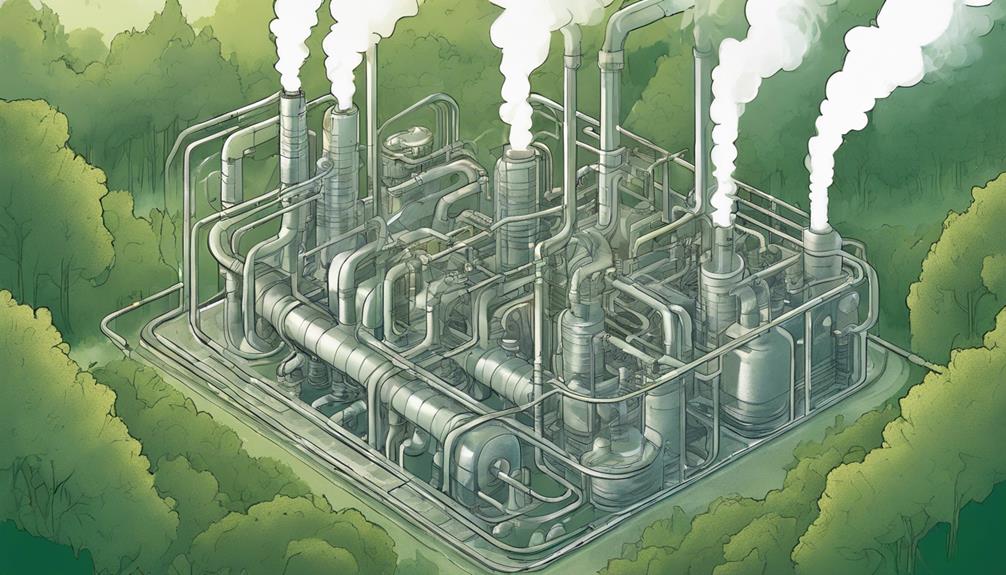
We must implement effective fluid management techniques, such as evaporation and ion exchange, to minimize the environmental impacts of geothermal brine and guarantee sustainable geothermal energy production. These methods enable us to treat and reuse geothermal brines, reducing the need for disposal. Additionally, we can use injection wells for safe disposal of geothermal fluid, ensuring that it does not contaminate soil or water sources.
| Technique | Description |
|---|---|
| Evaporation | Removes excess water from geothermal brine, reducing volume and toxicity |
| Ion Exchange | Removes harmful ions and minerals from geothermal brine, making it safer for reuse |
| Injection Wells | Safely disposes of geothermal fluid, preventing contamination of soil and water sources |
Reducing Air Pollution Emissions
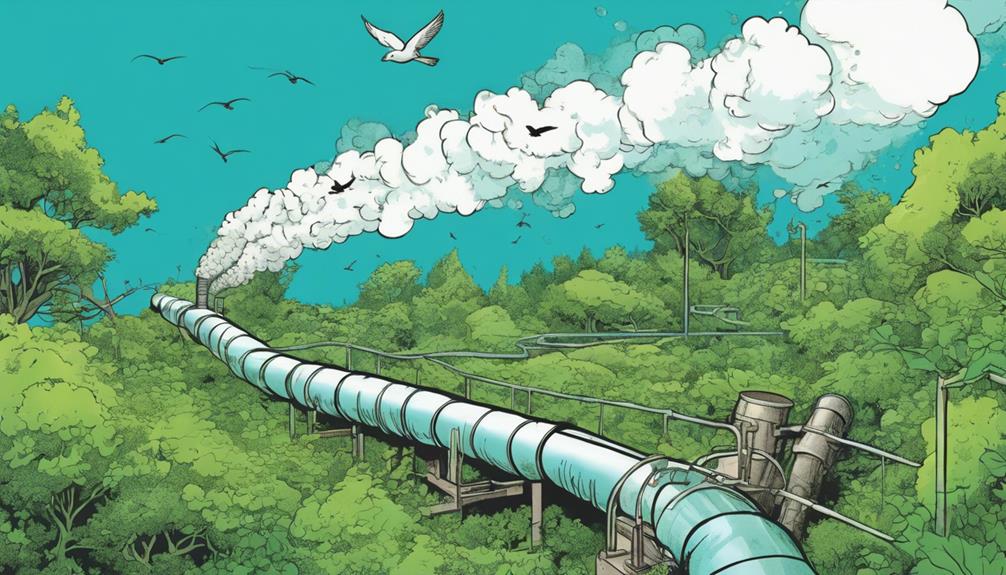
Most geothermal power plants can decrease their air pollution emissions by adopting advanced emission control technologies, such as electrostatic precipitators and bag filters, to capture particulate matter and other pollutants.
We can greatly minimize air pollution by shifting to low-temperature binary cycle power plants, which have lower greenhouse gas emissions. Additionally, we can implement strategies like advanced emission control technologies to reduce emissions and enhance air quality.
Protecting Water Sources Quality
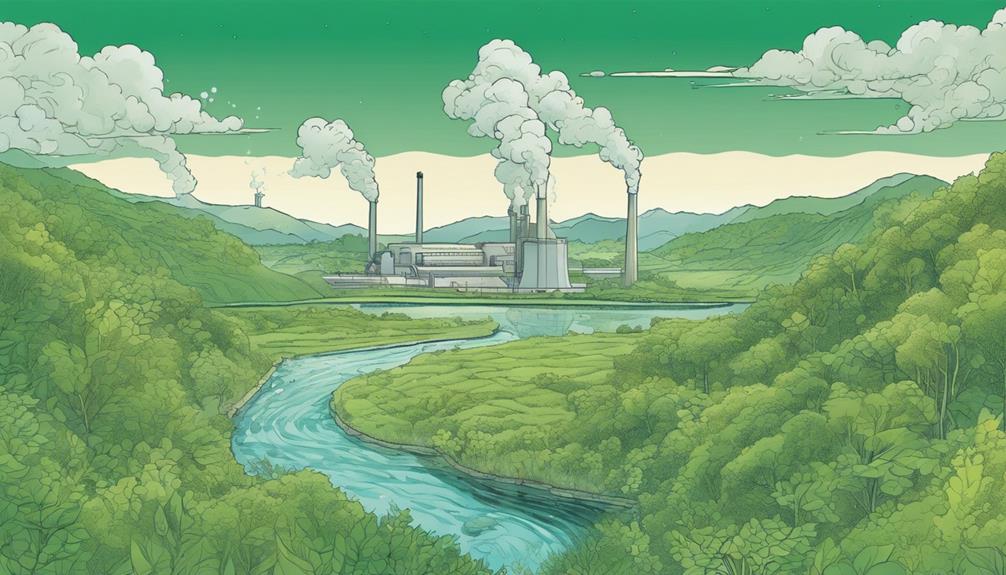
Safeguarding the quality of water sources is crucial in geothermal energy production, as polluted water can damage ecosystems and human health. We must take steps to prevent water contamination and uphold the integrity of our water sources.
This involves enforcing stringent regulations on wastewater disposal and treatment. We should also regularly monitor water quality to identify any possible issues early on. By doing so, we can avert harmful substances from entering our water sources and safeguard both the environment and public health.
It's our duty to guarantee that geothermal energy production doesn't compromise our planet's valuable resources.
Sustainable Waste Management Practices
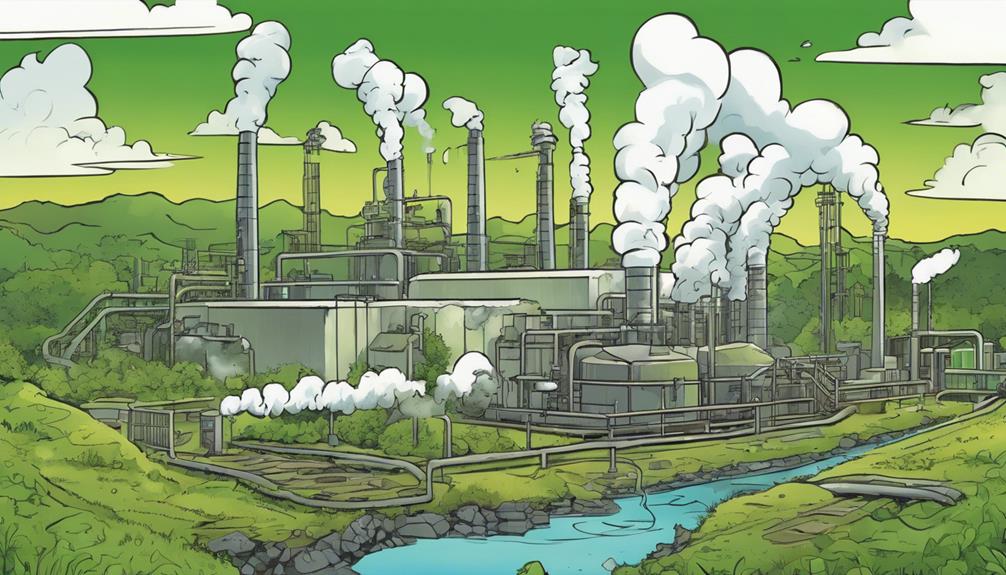
As we focus on maintaining pristine water sources, we must also address the equally important issue of managing geothermal waste, which can have devastating environmental consequences if not handled properly. Improper waste disposal can contaminate soil, air, and water, causing harm to ecosystems and human health.
To mitigate these risks, we must implement sustainable waste management practices.
Here are some key strategies we can employ:
- Proper disposal of drilling fluids: Guarantee that drilling fluids are disposed of in accordance with environmental regulations.
- Treatment and reuse of geothermal brines: Implement advanced treatment processes to reuse geothermal brines, reducing the need for disposal.
- Monitoring waste disposal sites: Regularly monitor waste disposal sites to prevent contamination and validate compliance with regulations.
- Adhering to stringent waste management procedures: Develop and follow strict protocols for waste management to prevent environmental harm.
Advanced Treatment Technologies Usage
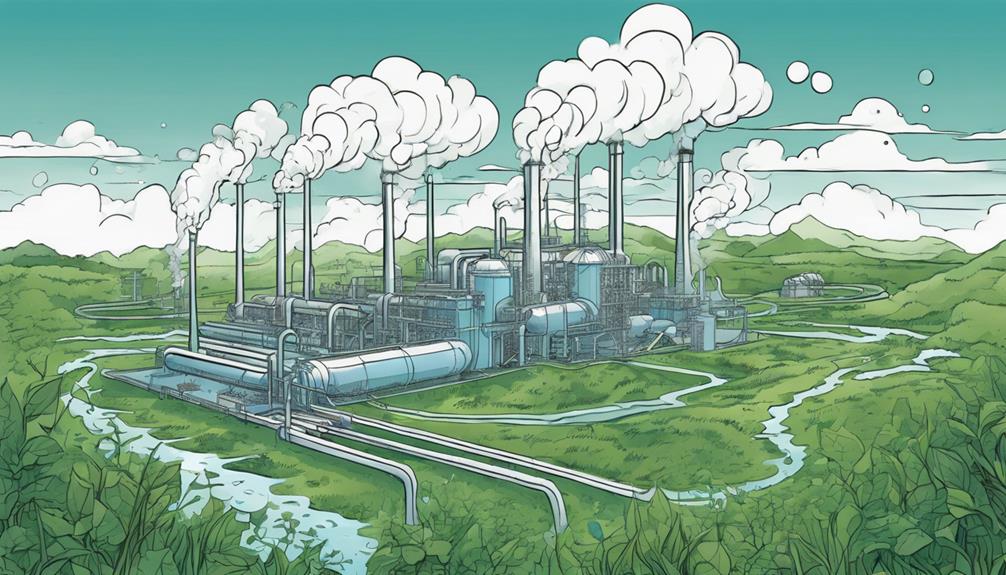
By embracing advanced treatment technologies, we can greatly reduce the environmental footprint of geothermal energy production. These innovative solutions enable us to minimize waste, reduce emissions, and protect delicate ecosystems. For instance, advanced emission control technologies like electrostatic precipitators can capture particulate matter, reducing air pollution. Meanwhile, closed-loop systems and brine treatment methods like evaporation and ion exchange can minimize fluid disposal needs and prevent water contamination.
| Treatment Technology | Environmental Benefit |
|---|---|
| Electrostatic Precipitators | Reduces air pollution by capturing particulate matter |
| Closed-Loop Systems | Minimizes fluid disposal needs, protecting water sources |
| Evaporation and Ion Exchange | Treats geothermal brine, reducing waste and emissions |
| Bag Filters | Captures particulate matter, improving air quality |
Transitioning to Low-Temperature Systems
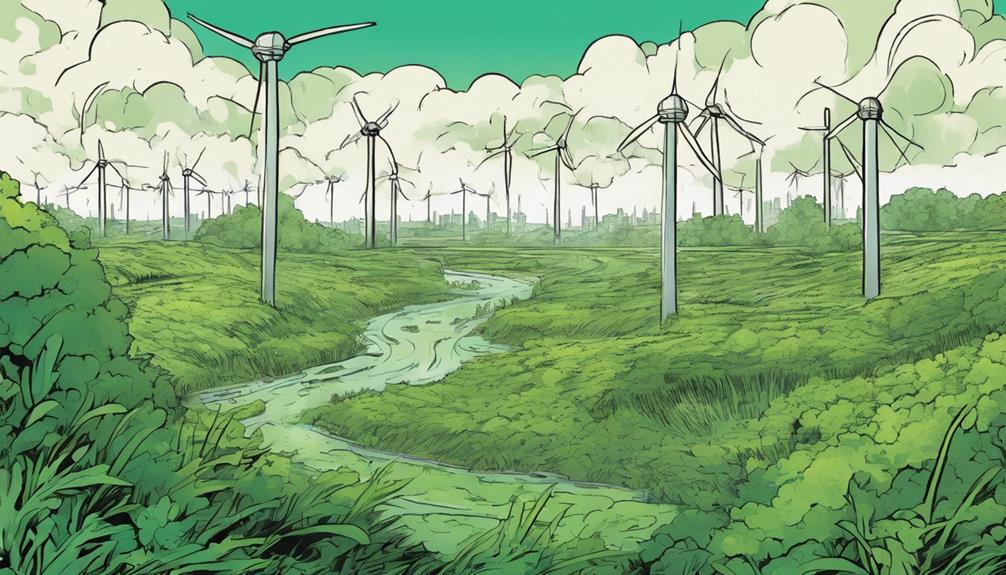
We're now exploring another key strategy for reducing geothermal energy's environmental impact: shifting to low-heat binary cycle power plants, which can decrease greenhouse gas emissions. This shift is essential, as geothermal energy production can still contribute to emissions. By adopting low-heat systems, we can minimize our carbon footprint and create a more sustainable future.
- Lower operating temperatures reduce the energy needed for cooling, resulting in lower emissions.
- Low-heat systems can utilize more geothermal resources, increasing overall efficiency.
- These systems are also more adaptable, allowing for easier integration with other renewable energy sources.
- By moving to low-heat systems, we can ensure geothermal energy production is cleaner, greener, and more environmentally friendly.
Frequently Asked Questions
What Are the Primary Environmental Concerns Surrounding Geothermal Energy Production?
"We identify primary environmental concerns surrounding geothermal energy production as habitat disruption, greenhouse gas emissions, air pollution, water contamination, and waste management, emphasizing the need for thorough assessments and sustainable practices to mitigate these impacts."
Can Geothermal Energy Be Used for Heating and Cooling Buildings Directly?
As we dig deeper into the earth's crust, we uncover a treasure trove of thermal energy. Yes, geothermal energy can be used for heating and cooling buildings directly, leveraging underground heat for a sustainable, eco-friendly solution.
Are Geothermal Power Plants Suitable for Remote or Off-Grid Locations?
"We think geothermal power plants can thrive in remote or off-grid locations, offering reliable energy access where traditional grids can't reach, and we're exploring ways to make them even more suitable."
How Does Geothermal Energy Compare to Other Renewable Energy Sources in Terms of Cost?
'As we explore the world of renewable energy, we find geothermal energy standing tall, offering competitive costs compared to solar and wind power, making it a viable option for a sustainable future.'
Can Geothermal Energy Be Used to Provide Power for Electric Vehicles?
"We can definitely use geothermal energy to power electric vehicles. By harnessing heat from the Earth, we can generate electricity to charge EV batteries, reducing reliance on fossil fuels and mitigating climate change."
How Does Geothermal Energy Contribute to Eco-Friendly Practices?
Geothermal energy economic transformation has greatly contributed to eco-friendly practices. By harnessing the heat from the Earth’s core, geothermal energy provides a sustainable source of power that produces very low greenhouse gas emissions. This alternative energy source helps reduce our reliance on fossil fuels, leading to a more environmentally friendly future.
Conclusion
As we wrap up our journey into the world of geothermal energy, it's striking how coincidentally, the very solutions that mitigate its environmental impacts also happen to make it a more efficient and cost-effective source of power.
By embracing these eco-friendly strategies, we're not only protecting the planet, but also future-proofing our energy landscape. It's a win-win – and one we can't afford to miss.
